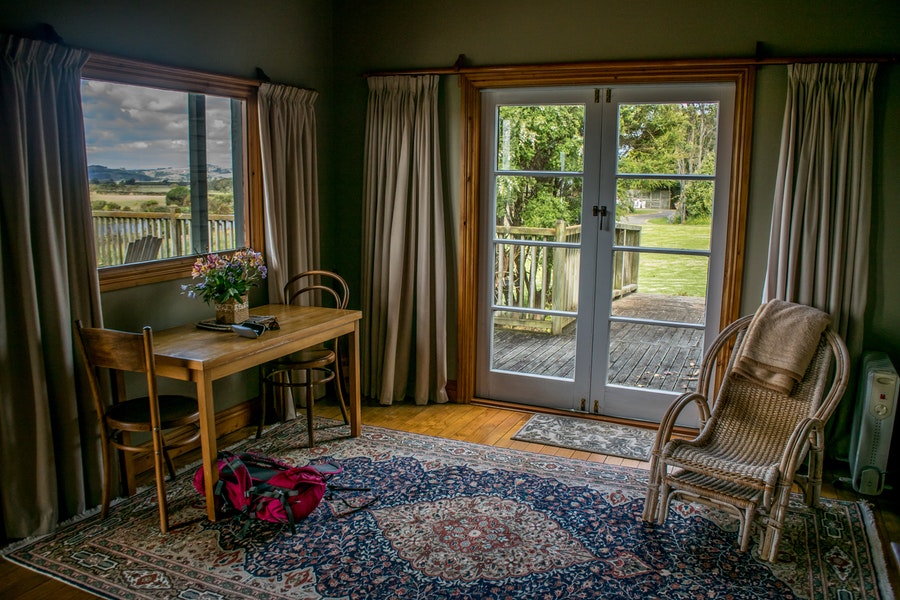Whether you need to use a wheelchair on a permanent basis to get around or are using a wheelchair temporarily while recovering from illness or injury, there are some changes you can make in your home to make it easier to get things done.
Wheelchair users will need to set up ramps to get in and out of the house, to be sure. They might need to install a lift if there are stairs leading to an upper-story bedroom. These are changes you make to the structure of the home. But you will also need to make arrangements for easier access to the everyday things you rely on. In particular, you will want to pay close attention to how you can best organize your home for waist-height access.
If organization hasn’t been your strong suit in the past, it’s time to practice organizing your dwelling so it’s more accommodating for your disability.
1. How To Organize Your Home to Reach Stuff More Easily

Tour your home to evaluate the level of clutter. When you break down the clutter on a room-by-room basis, the work will not seem so daunting. Then, it’s time to set up proper storage. This includes cabinets with waist-high shelving for easier access when sitting in your wheelchair. Add more shelves to the walls in rooms where you have the space.
Work in a home office? Use a shorter filing cabinet with two drawers instead of three so you can see them all from wheelchair-sitting height.
Install electrical outlets in a more convenient height, so you can readily plug things in and remove them from a seated position.
What about the kitchen? Designate cabinets and shelves closer to the floor for your most-used food items as well as cookware. Kitchen countertops usually are installed at 36 inches, but for waist-height access, install them at 28 inches to 34 inches from the floor height. Naturally, the kitchen sink (and bathroom sinks) need to be low enough so that you can access them while using your wheelchair too.
You might consider installing adjustable kitchen cabinets (electric powered) so that they are as easy for you to access when sitting as they are for any other members of your household who do not use a wheelchair.
2. Consider New Ways to Store Items

Think of your living room and all of the stuff that can get piled up until massive clutter ensues. Chances are, there is a lot of wasted space that you can put to good use. For example, don’t leave blankets rumpled up on the couch. Fold them nicely and keep on the back of the couch so they are easy to grab when needed but not taking up valuable space. This might be easier for you then having to get them from the top shelf of the hall closet.
Do you see board games and toys strewn about? A very practical solution involves using a hollow ottoman. The lid lifts up so you can store all these games and then it serves like a normal piece of furniture, giving you dual usage.
3. Extending Your Grasp
For the items that need to go on shelves or in cabinets that are higher up than your hands can reach, you can still access them with ease. All you need is a grabber device, which you control with your hand to pick up anything from a book or box to a piece of equipment or even food from the pantry.
4. Be Consistent

Once you have your home nicely organized, with room for everything you routinely reach for well within your grasp at waist-height, you’ll want to be consistent, going forward. Put things away in the same place and don’t allow yourself to get careless. Knowing where items are stored makes it faster and easier to get them when they are needed again, meaning you won’t be delayed in preparing a meal or getting ready to go outside.
5. Boost Organization for a Better Home Environment When Disabled
The more organized you can get with your home, especially to make items easily available from waist-height access, the more enjoyment you will get from your situation. No longer will you have to rely on others to obtain something nestled on a too-high shelf. What’s more, you will have the peace of mind that comes from knowing that everything you want has its own place and that things are stowed away for easy access whenever you need them.


Hello. I’ve seen special adapters in kitchens with high cupboards. The mechanism? Pulls the contents down to you. Where could I find these? Thank you.
My hardest thing is getting low enough to reach things. Especially when they are at different direction’s.
Are there any places or help with organizing. Changing sheets, etc.